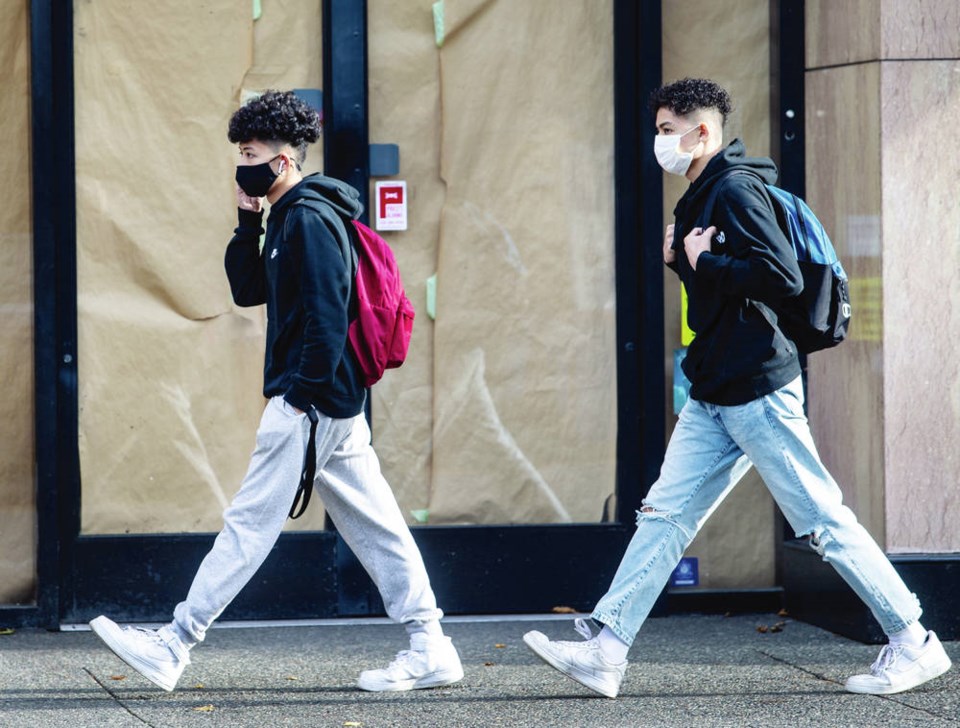Anniversaries prompt reflection, and the past weeks have been no exception. Since January, we’ve been hitting one-year COVID-19 milestones, one after another.
A year ago, on Jan. 28, B.C. became the second Canadian province to confirm a case of COVID-19. The dubious privilege came just three days after the first case in Canada was confirmed in Toronto.
This week, on Friday, we’ll mark the anniversary of the confirmation of Canada’s first case of community transmission, another dubious distinction for B.C. Next week, it’ll be a year since B.C.’s pandemic-control measures shuttered offices, brick-and-mortar shops, entertainment venues and in-person classes for several months.
In the time since, more than 76,000 British Columbians are known to have caught the disease, about 92 per cent of whom have recovered. More than 1,300 have died.
Those numbers are daunting. Nationally, they’re worse, with more than 850,000 cases and some 22,000 deaths.
The pandemic has exposed many fissures in our society that had been overlooked for years. Some layers of the bedrock on which our social structures are built were already failing. Many places in the province and elsewhere had been struggling to contain addiction, crime, mental illness and homelessness for decades.
The past year tipped many neighbours who were just able to manage into a less fortunate category. Pandemic shutdowns provided the final economic, social, psychological and health triggers that led — like the quick-clay landslide that devastated a subdivision in Gjerstrom, Norway, in January — to swift downturns among many of the most vulnerable, under- and unemployed, underserved and marginalized members of our communities.
Reports of depression, anxiety, eating disorders and suicidal thoughts increased among many Canadians, but particularly among the young and among vulnerable people. Deaths due to overdoses have outpaced those from COVID-19. Domestic-abuse hotlines are reporting many more calls, as household and financial stress rises and social-distancing orders have closed access to daily relief and escape options.
Then there’s COVID-19’s horrific consequences in many of our long-term care homes.
Locally, the decrease in onsite business downtown was accompanied by an inverse increase in vandalism and property crime.
Some of those shops, restaurants and businesses, which employed other of our friends and neighbours, have closed for good, doubling downtown Victoria’s retail vacancy rate. That the commercial rate remains low is largely due to government programs helping businesses through the pandemic.
Other businesses shifted their offerings. They moved, for example, to online sales with sidewalk pickup or to cook-at-home meal packages for takeout or delivery. But the pandemic has meant that far fewer of our friends, kids and neighbours are currently employed in retail, food-service or tourism sectors, even with government supports or changes in offerings.
Researchers in Ontario recently developed a model to assess the costs of COVID-19 and of the pandemic restrictions in that province. As can be expected, they show that negative impacts occur when we do not social distance enough and also when we do it too much. However, the tool allows researchers to explore and model the effects of various policy options and to see where an optimal balance might rest.
Not everyone has suffered, mind you. Demand continues to grow for frontline health care, obviously, and for people to work in vaccine and health research or production of protective equipment. Pandemic funding created well-paid opportunities for educated, skilled, well-placed workers to study the virus, its effects and its weaknesses. Occupations that support the pandemic transition have also done well. For example, people working for Shopify or set up to help retailers and restaurants transition to online sales saw increased opportunities and income. People who were already doing work that could be done as easily remotely as in an office also experienced less financial disruption.
Indeed, surveys undertaken over the last six months show that, in general, people with university degrees weathered 2020 better financially than others. Being male and NOT a household’s main childminder also conferred employment advantages during the pandemic.
And then there are those who had the wherewithal and foresight to have already invested in companies such as Shopify, Zoom, Amazon, Google and Microsoft. They might see enough capital gains to offset the dismal 2020 performance of so many other investments.
They can look forward to a different annual milestone when they report that to the Canada Revenue Agency.



